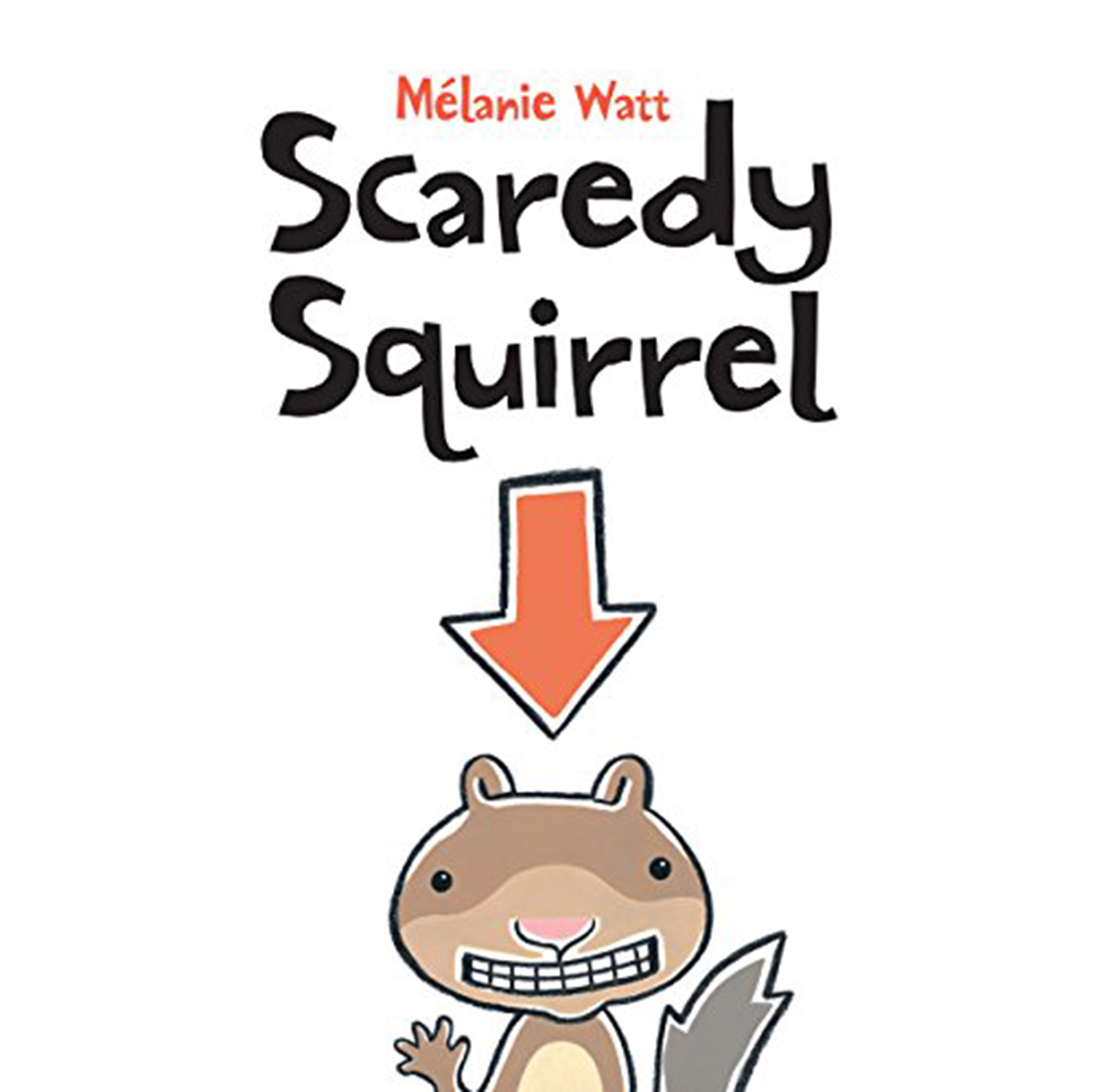This month's Book Nook topic is...
Learning Print Knowledge with Scaredy Squirrel

In order to be able to read and write, children need to understand print. Print knowledge means understanding how print works – that letters make up the words, that we read from top to bottom and left to right. It is also important that children understand that print is meaningful. This means making the connection that the symbols that appear on the page as letters represent something meaningful – that they are the words that tell the story. If children don’t understand that print communicates like talking does, they may ignore it, and miss out on early opportunities to figure out how print works.
Here are some simple tips for showing your child that print has meaning.
Let’s get started!
The Book:
Scaredy Squirrel by Mélanie Watt
Why we picked it
This book is particularly good at presenting print in a variety of ways – in addition to longer sentences that tell the story, the book uses clear, single-words to label pictures. Symbols, tables and lists are also used throughout the book, so there are many diverse opportunities to draw your child’s attention to print!
Scaredy Squirrel tells the story of an extremely cautious squirrel who never wants to leave the comfort of his tree because of the perceived dangers in the outside world. Poison ivy, germs and an intense fear of killer bees are just some of the reasons Scaredy Squirrel prefers to stay put. When he finally does jump out of his tree, he realizes how exciting it can be! This inspires him to make a major life change by planning to jump into the unknown each and every morning.
POP to build print knowledge
A key strategy you can use to show your child that print has meaning is to POP or Point Out Print. Often children ignore print and just look at the illustrations. You can help your child notice the print by pointing it out. This gives him opportunities to think and talk about the print he sees.
You might POP by pointing to the words, making comments and asking questions about the print, or you can use your finger to track the words you are reading. When you do this, you’re letting your child know that the story is in the words, not just in the pictures.
The first time you read the book
The first time you read the book, run your finger along the words as you say them to help your child connect what you are saying with the symbols on the page. You might also make a comment like, “Look, I’m reading these words. These words are telling us the story.”
The second time you read the book
Now that your child is more familiar with the story, you can pause a few times during the reading to Point Out Print. For example, on the page that shows all of the things Scaredy Squirrel is afraid of, you could say, “This is a picture of a tarantula, and this is the word, ‘tarantula’.” Another opportunity to Point Out Print is Scaredy Squirrel’s list of advantages for never leaving his tree. Again, you can help your child make sense of print by making connections between the pictures and words. For example, “Scaredy Squirrel made a list of reasons to stay in his tree. These are the pictures that show Squirrel’s mouth full of nuts and here are the words that say, ‘plenty of nuts’. These words tell us about the picture.”
The third time you read the book
Now that you’ve made the connection between pictures and print, this time, you might POP to show how numbers have meaning throughout the book. In Scaredy Squirrel’s daily routine, illustrations of clocks are shown with the digital time written underneath. You could say, “These are numbers that tell us the time on the clock. These numbers say that it’s 7:00 am. That’s morning time. It’s time for Scaredy Squirrel to eat his nuts.” This will help your child understand that print doesn’t just represent words, but it can also represent time.
Happy reading!
More Resources
The strategies in this Book Nook post are drawn from Hanen’s practical, research-based guidebooks for building emergent literacy. Explore the links below to learn more about how these guidebooks can support you.
For Parents I'm Ready! guidebook
I'm Ready! guidebook
For Educators ABC and Beyond guidebook
ABC and Beyond guidebook
